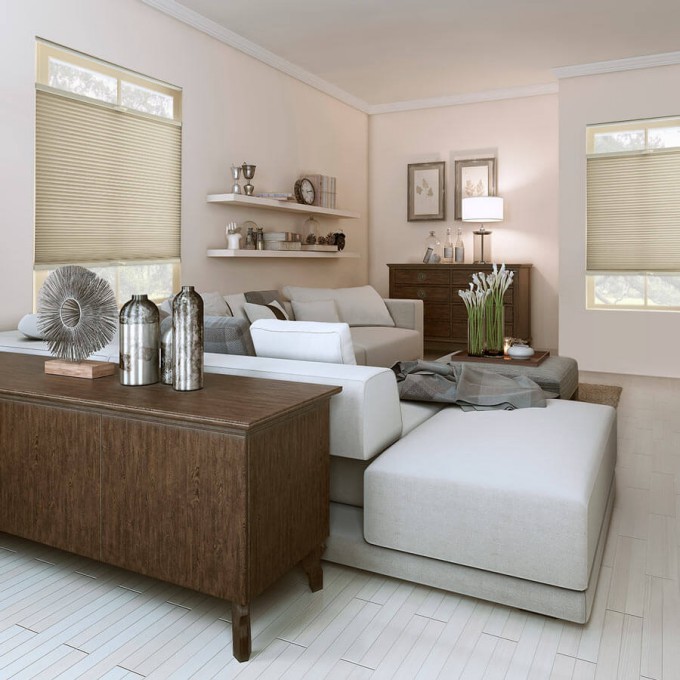The windows of a house may be the portal to the outside world, but that doesn’t mean you shouldn’t search for some improvements to make them more efficient.
Window efficiency especially matters a lot in living rooms. This is because most living areas are designed smack in the middle of a home and many of them are designed based on an open floor plan. The light that’s let in through such living room windows is basically illuminating the rest of the spaces within the open floor layout.
If you want to know how to improve the window efficiency to increase the comfort of your lounge area, then here are 5 amazing ones to get you started:
Replace regular glass with Low-E glass panes

Image by Michael Gaida from Pixabay
The windows of a living room are a source of natural light. Some homes are oriented in a way that places the living room smack in the middle of the sun’s path (i.e. the path of the sun moving from east to west throughout the day). This basically means that a lot of sunlight is going to filter into your living room, and if your windows are installed with regular glass, you can prepare yourself for a heavy greenhouse effect that’s going to increase the heat input of your space.
But if you go for Low-E (i.e. low energy) glass window panes, the greenhouse effect is going to be drastically reduced. The Low-E coating reflects the heat back, which helps keep the interior cooler in summer and warmer in winter. Moreover, it doesn’t scratch off, and neither does it let the materials used in your interior design fade from the UV rays. It’s definitely a great way to enhance the efficiency of your living room windows.
Efficient window treatments
Since windows are the main source of heat and cold that inevitably seeps into the house depending on the weather, adding energy-efficient window treatments are a good way to manage the interior temperature of your living room.
Honeycomb blinds are a good option for sleek, modern living room interiors. They consist of small pockets that trap air inside of them. This helps keep the interior cool in summer and warm in winter. These blinds are able to provide excellent insulation. They also reduce the amount of noise that can enter your homes. They’re usually opaque and diffuse the sunlight that filters through the air pockets to provide an incandescent illumination in your living rooms.
However, if you want a more traditional look, then you can opt for thermal curtains and drapery. They come in medium to light hues and they have a white thermal reflective backing that throws back almost 33% of the radiation that enters through the window. These curtains keep heat inside when its winter and are able to keep the interiors cool when its summer, thus reducing electricity bills as a whole.
Exterior shades and awnings
If you can reduce the amount of temperature changes that can seep through your windows, you can certainly make your living rooms cozier. The best way to do this lessens the input of summer sunlight in your homes while at the same time, increasing the winter natural light. It must sound contradictory but can be easily done by installing carefully designed awnings and shades on your windows.
Fun fact: the summer sun floats higher in the sky thanks to the tilt of the earth on its axis. Similarly, the winter sun floats lower in the sky for the same reason. So, if your awning corresponds with the height of the sun in the sky, you can easily design it to keep summer sunlight out while increasing the input of winter light. The thumb rule is to make the shade shorter so that its shadow lengthens when the sun is high in summer. The short shade would be redundant when the sun is lower in the winters and will let in an abundance of natural light.
It’s best if you hire a professional architect or a window design company to design the best shades for you.
Window caulking
You can install window caulking to prevent air leakage or entry, which can also enhance the efficiency of your living room windows while making the room feel cozier. Caulking is a thin material that basically fixes air leaks by covering the joints, cracks, and gaps that appear in a window structure. It only works on areas that are less than a quarter of an inch thick.
If you live in extreme climates, then you can block the entrance of cold or hot drafts through the windows by caulking them. Do note that although caulking usually lasts a long time, it’s best to replace it at least once a year and to keep checking up throughout the rest.
Window louvres for houses
Lastly, you can always install movable window louvres to enhance the efficiency of your living room windows. They come in both horizontal and vertical designs. They can be permanent or semi-permanent. The former are not moveable and are usually made from concrete. They’re used as a design element on the exterior of the window and can never be removed.
On the other hand, semi-permanent louvres are like shutters. They can be adjusted to direct the flow of the sunlight. They’re highly stylish, add to the beauty of the house, and are a great way to make your living room windows more efficient.
These 5 window efficiency improvements can definitely increase the comfort of your living room while contributing to the aesthetics of the space. So, upgrade the quality of your spaces by choosing the right window efficiency treatment.
—–
Zana is a window treatments consultant with over 20 years of experience.




Nice Post!